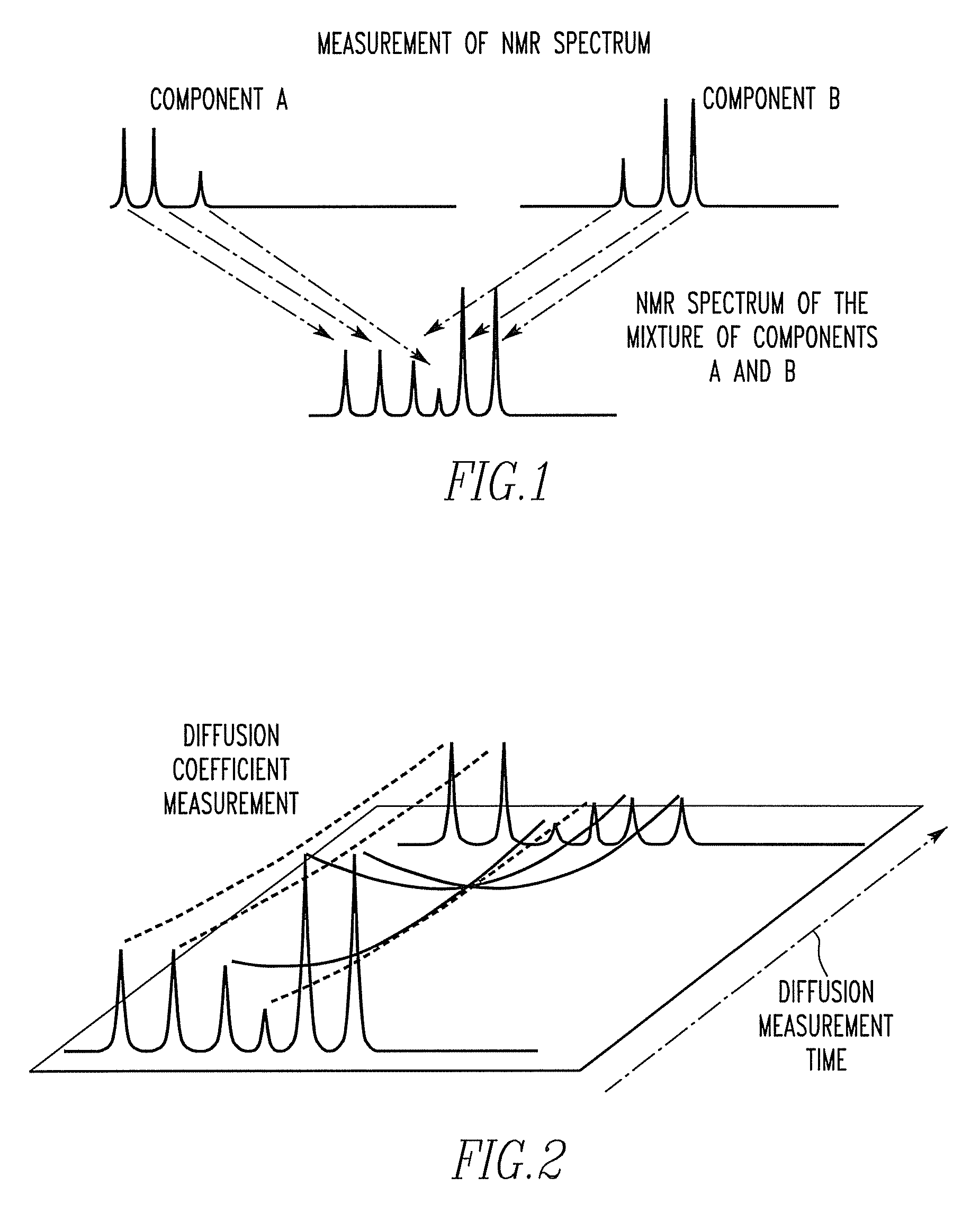NMR measurement method
a measurement method and nmr technology, applied in the field of nmr measurement method, can solve the problems of separation of methyl group and other peaks of the same molecule, processing does not improve signal separation, and cannot be applied to solid samples
- Summary
- Abstract
- Description
- Claims
- Application Information
AI Technical Summary
Benefits of technology
Problems solved by technology
Method used
Image
Examples
embodiment 1
[0072]First, a method of separating peaks in a high-resolution NMR spectrum of spins I according to the longitudinal magnetization times of the spins I is described. To perform the separation, an NMR measurement illustrated in the flowchart of FIG. 8 is made. Because of this NMR measurement, the longitudinal magnetization relaxation times of the spins I can be measured through the spectrum of the spins I.
[0073]When an NMR spectrum of a mixture consisting of plural components is acquired, the high-resolution NMR spectrum of the spins I is a superimposition of NMR peaks of the various components. Peaks in the high-resolution NMR spectrum of the spins I obtained by this measurement can be classified according to the longitudinal magnetization relaxation times of the spins I.
[0074]That is, it is known that in normal NMR measurements, the strongest NMR signal is produced at thermal equilibrium, because the difference in the number of occupied states in a Boltzmann distribution between tw...
embodiment 2
[0094]A method of classifying high-resolution NMR spectra of spins S (in the following example, 13C nuclei) in terms of longitudinal magnetization relaxation time of the spins I (in most case, 1H) is next described. Examples of the spins S are various nuclear species which are other than 1H nuclei and include 13C, 15N, 29Si, and 31P nuclei capable of producing high-resolution NMR spectra.
[0095]To carry out this classification, NMR measurements illustrated in the flowchart of FIG. 11 are performed. That is, excited energies of the spins I are shifted to the spins S coupled to the spins I (magnetization transfer) while measuring the longitudinal magnetization relaxation times of the spins I. The longitudinal magnetization relaxation times of the spins I are measured throughout the high-resolution NMR spectrum of the spins S.
[0096]When an NMR spectrum of a mixture consisting of plural components is acquired, a high-resolution NMR spectrum of the spins S is a superimposition of NMR peak...
embodiment 3
[0123]The point of the present invention is to measure the longitudinal magnetization relaxation time of the spins I while they are uniform in longitudinal magnetization relaxation time within each individual component due to spin diffusion, thus acquiring a high-resolution NMR spectrum.
[0124]In Embodiments 1-2, measurements were performed under the condition where spins I were present at high density and uniform longitudinal magnetization relaxation time was intrinsically achieved by spin diffusion. On the other hand, it is reported that spin diffusion can be promoted artificially even if spins I are present at low density (such as DARR (dipolar assisted rotational resonance) producing a 13C-13C distance correlation).
[0125]Accordingly, it is conceivable that spin diffusion could be promoted artificially during measurement of longitudinal magnetization relaxation times of the spins I to achieve a uniform longitudinal magnetization relaxation time artificially and that a high-resolut...
PUM
 Login to View More
Login to View More Abstract
Description
Claims
Application Information
 Login to View More
Login to View More - R&D
- Intellectual Property
- Life Sciences
- Materials
- Tech Scout
- Unparalleled Data Quality
- Higher Quality Content
- 60% Fewer Hallucinations
Browse by: Latest US Patents, China's latest patents, Technical Efficacy Thesaurus, Application Domain, Technology Topic, Popular Technical Reports.
© 2025 PatSnap. All rights reserved.Legal|Privacy policy|Modern Slavery Act Transparency Statement|Sitemap|About US| Contact US: help@patsnap.com



